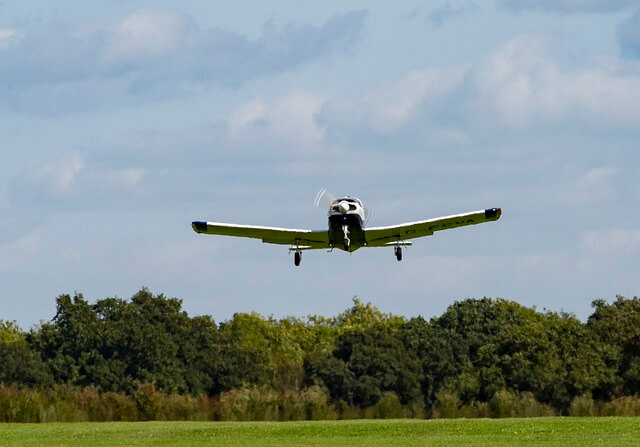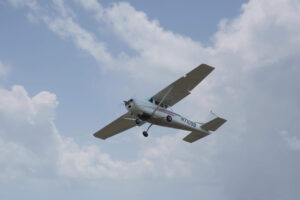Introduction
The allure of flying has captivated humans for centuries, symbolizing freedom, adventure, and technological prowess. Today, obtaining a Private Pilot License (PPL) transforms this dream into a reality, enabling individuals to command the skies for personal, recreational, and even professional purposes. This comprehensive guide explores the steps, requirements, and benefits of earning a PPL, providing a detailed roadmap for aspiring pilots.
What is a Private Pilot License?
A Private Pilot License is a certification that permits the holder to act as the pilot-in-command of an aircraft for non-commercial purposes. With a PPL, pilots can fly solo or carry passengers, explore different regions, and enjoy the unique perspectives offered by aerial travel. This license forms the foundation for further aviation pursuits, including advanced ratings and professional certifications.
Benefits of Obtaining a Private Pilot License
Earning a Private Pilot License offers numerous benefits. Firstly, it grants unparalleled personal freedom, allowing pilots to travel on their schedules and access remote destinations. Additionally, a PPL opens doors to career opportunities in aviation, such as aerial photography, surveying, or eventually becoming a flight instructor. Beyond practical advantages, the process itself fosters personal growth, discipline, and a profound sense of achievement.
Eligibility Requirements
To embark on the journey of obtaining a PPL, certain eligibility criteria must be met. Applicants must be at least 17 years old, possess a valid medical certificate, and demonstrate proficiency in English. Additionally, they must meet specific flight training and examination requirements, including a minimum of 40 flight hours, encompassing both dual instruction and solo flight time.
Choosing a Flight School
Selecting the right flight school is crucial for a successful training experience. Prospective students should consider factors such as the school’s reputation, location, fleet condition, and instructor qualifications. There are various types of flight schools, including independent flight academies and collegiate aviation programs, each offering unique advantages and resources.
Ground School Training
Ground school is the theoretical component of pilot training, covering essential subjects such as aerodynamics, navigation, meteorology, and aviation regulations. This phase equips students with the knowledge necessary for safe and effective flying. Study tips include engaging in active learning, utilizing multimedia resources, and forming study groups for collaborative learning.
Flight Training
The heart of pilot training lies in practical flight lessons. Under the guidance of a certified flight instructor, students learn basic maneuvers, takeoff and landing techniques, emergency procedures, and cross-country navigation. The exhilarating milestone of the first solo flight marks significant progress, while cross-country flights build confidence and proficiency in planning and executing longer journeys.
Medical Certification
Securing a medical certificate is a vital step in the licensing process. There are different classes of medical certificates, with the third class being the minimum requirement for a PPL. The certification process involves a thorough medical examination by an FAA-approved physician, assessing the applicant’s overall health, vision, hearing, and neurological function. Common disqualifiers include certain cardiovascular conditions, uncontrolled diabetes, and substance abuse.
The Written Exam
The written exam, known as the Private Pilot Knowledge Test, assesses the student’s understanding of aviation theory. This multiple-choice exam covers topics such as flight operations, aircraft performance, weather patterns, and airspace regulations. Effective preparation strategies include using FAA-approved study materials, taking practice exams, and attending preparatory courses offered by flight schools or online platforms.
The Checkride
The checkride is the final practical test, combining an oral exam and a flight test. During the oral exam, the examiner evaluates the candidate’s knowledge of aviation concepts, regulations, and flight planning. The flight test assesses practical flying skills, including maneuvers, navigation, and emergency procedures. Successful completion of the checkride culminates in the issuance of the Private Pilot License, a testament to the pilot’s competence and dedication.
Costs Involved
Obtaining a PPL involves various costs, including flight school tuition, aircraft rental, instructor fees, study materials, medical examinations, and exam fees. On average, the total cost ranges from $8,000 to $15,000, depending on the flight school, location, and individual progress. Prospective pilots can explore financing options such as loans, scholarships, and payment plans offered by flight schools to manage these expenses effectively.
Timeline for Completion
The duration of PPL training varies based on factors such as training frequency, weather conditions, and student aptitude. On average, students complete their training within six months to a year. Maintaining a consistent training schedule, staying motivated, and regularly reviewing theoretical knowledge can help expedite the process and ensure steady progress toward the license.
Building Flight Hours
Accumulating flight hours is essential for skill development and meeting licensing requirements. Pilots can build hours through diverse activities such as practicing solo flights, participating in flying clubs, and embarking on cross-country trips. Logging practices should adhere to FAA regulations, accurately recording flight time, types of operations, and endorsements received.
Additional Ratings and Endorsements
A PPL is a stepping stone to further aviation achievements. Pilots can pursue additional ratings and endorsements to enhance their capabilities and expand their flying privileges. Common additions include the instrument rating, which enables flying in various weather conditions, and the night flying endorsement, allowing for safe operations during nighttime.
Maintaining Your License
Maintaining a PPL involves fulfilling currency requirements and undergoing periodic flight reviews. Pilots must complete a biennial flight review, which includes an hour of ground instruction and an hour of flight training. Keeping thorough records of flight hours, endorsements, and medical certifications is essential for compliance and smooth license renewal.
Joining a Flying Club
Flying clubs offer valuable benefits for pilots, including reduced aircraft rental rates, access to a community of aviation enthusiasts, and opportunities for shared learning experiences. Joining a club can provide ongoing support, mentorship, and a sense of camaraderie that enhances the overall flying experience.
Career Opportunities with a PPL
While a PPL primarily serves recreational purposes, it can also pave the way for various career opportunities in aviation. Pilots with a PPL can engage in activities such as aerial photography, banner towing, and flight instruction. Moreover, it serves as the foundation for advanced certifications, such as commercial and airline transport pilot licenses, opening doors to professional aviation careers.
Safety Considerations
Safety is paramount in aviation. Pilots must continuously engage in risk management practices, stay updated with emergency procedures, and participate in ongoing training to maintain proficiency. Embracing a safety-oriented mindset and adhering to regulatory guidelines contribute to a safe and enjoyable flying experience.
Technological Advances in Training
Advancements in technology have revolutionized pilot training. Modern flight simulators, online learning platforms, and advanced avionics systems provide students with enhanced learning opportunities and realistic training scenarios. Embracing these tools can accelerate skill development and improve overall training efficiency.
Common Challenges and Solutions
Aspiring pilots may encounter challenges such as financial constraints, scheduling conflicts, and learning plateaus. Solutions include exploring financing options, maintaining a flexible training schedule, seeking support from instructors and peers, and staying motivated through goal-setting and celebrating milestones.
Regulatory Bodies and Resources
Several regulatory bodies oversee aviation standards and licensing, including the Federal Aviation Administration (FAA) in the United States and the European Union Aviation Safety Agency (EASA) in Europe. Aspiring pilots should familiarize themselves with the regulations and resources provided by these authorities to ensure compliance and access valuable information.
Frequently Asked Questions
How much does it cost to obtain a Private Pilot License? The cost of obtaining a PPL typically ranges from $8,000 to $15,000, depending on the flight school, location, and individual progress.
How long does it take to get a Private Pilot License? On average, it takes six months to a year to complete the training and obtain a PPL, though the duration can vary based on training frequency and other factors.
What are the medical requirements for a Private Pilot License? Applicants must obtain a third-class medical certificate, which involves a thorough examination by an FAA-approved physician.
Can I fly at night with a Private Pilot License? Yes, with a night flying endorsement, pilots can operate aircraft during nighttime conditions.
What are the age requirements for a Private Pilot License? Applicants must be at least 17 years old to qualify for a PPL.
Is a Private Pilot License valid internationally? A PPL issued by the FAA is recognized internationally, though pilots must comply with the regulations of the country they are flying in.
Conclusion
Obtaining a Private Pilot License is a rewarding and transformative journey, offering a unique blend of personal freedom, adventure, and professional opportunities. By following the outlined steps and maintaining a commitment to safety and continuous learning, aspiring pilots can successfully navigate the path to becoming licensed aviators. The sky is not the limit—it’s just the beginning.




